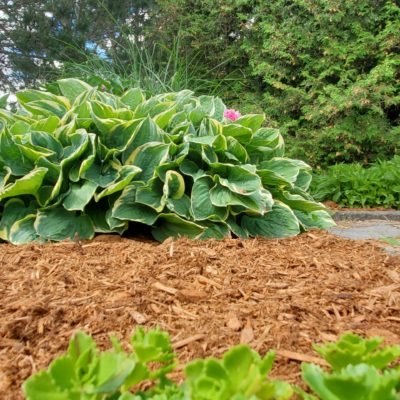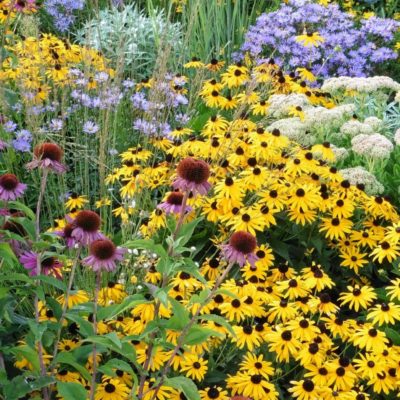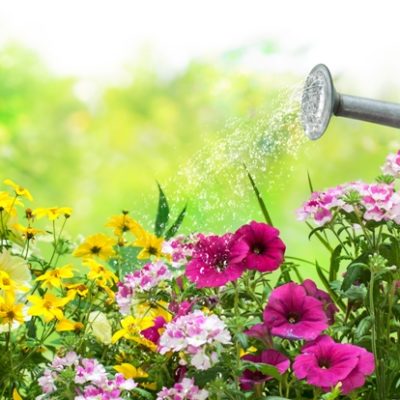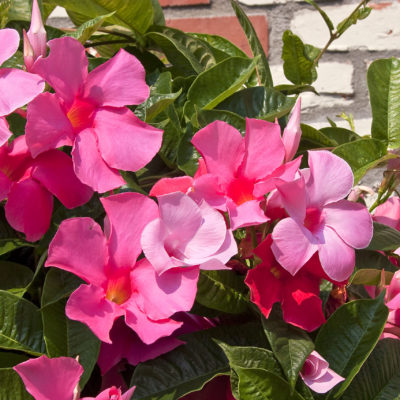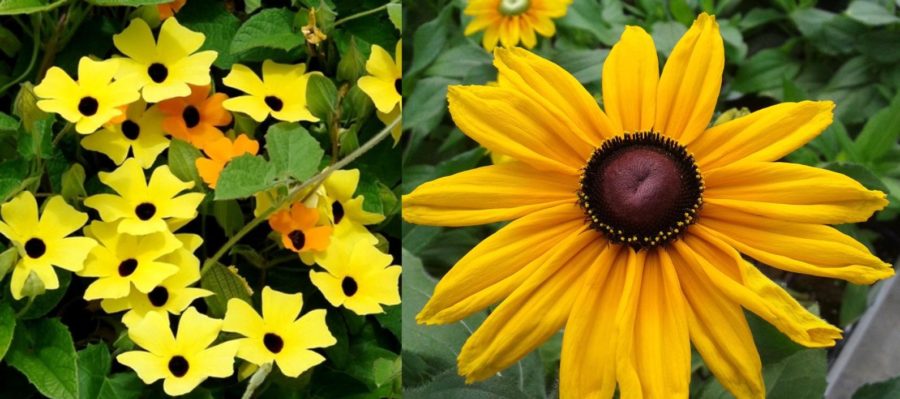
Annuals or Perennials: What’s the Difference?
As you walk through Belgian Nursery during the busy Spring season, you may wonder we have a “Perennial Centre” and “Annual Greenhouses” – aren’t all plants the same? They all need sun, water, soil, airflow, maybe some fertilizer, so what’s the difference?
The Basics:
Annuals Bloom All Summer then Die Off In Fall — Plant Every Year
Perennials Bloom for 3-6 Weeks but Come Back Every Year — Plant Once
Life Expectancy:
Annuals: 1 Growing Season
Annuals cannot handle frost or cold temperatures, but once the threat of spring frost is over (usually around the May long weekend) they can bloom non-stop until fall. They cannot handle our winters.
Perennials: 3 Years or More
Perennials can survive our cold Canadian winters, and actually benefit from sleeping through the winter in the garden. Some varieties can last decades while others may have a shorter lifespan – check the individual tags for details.
Note: Biennials are short-lived or tender perennials that will live for 2 years before dying off, though many self-seed to grow a new patch.
Temperature:
Annuals: Not Winter Hardy – CANNOT TOLERATE FROST OR TEMPERATURES UNDER 10°C
Annuals are tender plants and are not meant to survive cold overnight temperatures or frost. The best way to protect them is to bring them inside if the temperature drops below 10°C, especially overnight. You can also cover them with a drop cloth or old bed sheet (remove the cloth in the morning) but this may not be enough protection against a hard frost. Typically, it is safe to plant Annuals outside during the May long weekend; check the weather stations regularly.
Perennials: Winter Hardy – Established Plants Can Handle Frost and Cold; Tender new growth on Newly Planted Perennials Can Get Frost Damage
Perennials are tough and most aren’t even thinking of growing until the spring frosts have passed. Some of the early spring Perennials may be popping up during the threat of frost, but they can handle it with just a bit of damage to their new growth. If you’re worried about them, you can cover them with an old bed sheet for protection – remember to take it off in the morning!
Bloom Times:
Annuals: Continually from Spring planting through Summer until Fall Frosts
For season-long colour and blooms in gardens, planters, window boxes, and hanging baskets, you can’t go wrong with Annuals! Most flowering varieties will fill your outdoor spaces with vivid blooms for months, from late spring all the way to early fall.
Perennials: Typically 3-6 weeks depending on the variety; check tags for specific flowering times
Depending on the variety and the season, perennials will typically flower for 3 to 6 weeks. Some varieties will show off their colours as soon as the snow melts, like Helleborus and Viola, while others need the intense summer heat before they can open up their petals, like Echinacea and Hemerocallis (Daylily). Some varieties will take their time to soak up that summer sun, waiting until the temperature starts to cool off in fall, like the upright Sedum (Stonecrop). Planting Perennial gardens with different flowering times will give you different flowers as the seasons change, and some Perennials even add winter interest!
Water:
Annuals: Regular Deep Watering Required (Check Every Day in Summer)
Annuals need regular, deep watering for their entire lifecycle, especially if they’re in hanging baskets or containers as these will dry out even faster than those planted in flower beds. Be prepared to water at least once a day, weather depending – summer heat waves and droughts will dry out your Annuals even further, so you may have to water in the morning and evening!
Perennials: Many Varieties are Drought Tolerant Once Established (1 Full Year Planted)
Most Perennials are drought tolerant once they’re established, meaning that their root systems can go deep or wide enough to find water through much of the dry season. They’ll need help to get to that point, so for the first full year after planting it is best to water deeply and regularly! They’ll be more drought tolerant in their second year and beyond, but you’ll still need to water deeply during the summer heat waves and droughts.
Fertilizer:
Annuals: Feed an All-Purpose or Flowering Fertilizer Every 2-3 Weeks
It takes a lot of energy to look that gorgeous from spring until fall! That’s why your Annuals will benefit from extra food in the form of an all-purpose or flowering fertilizer. Using a water soluble solution that can be mixed into your watering can or attached directly to your hose is a great way to get the food they need to their root systems, fast! For flower beds and gardens, you can also use a slow release fertilizer and/or a few added inches of compost or manure (don’t add these to your containers, as it’s way too heavy and can damage your plants).
Perennials: Apply Slow-Release Fertilizer and/or Bone Meal in Early Spring; check tags for individual needs
Once established, Perennials acquire sufficient nutrients from the soil so there’s no need for additional feeding. You can use a slow release fertilizer in early spring for a nutrient boost, but your best bet for Perennial success is in the ground: in the spring or fall, mix in a few inches of compost, manure, triple mix, garden soil, and/or black earth to your gardens. For new plantings, you can add a handful of Bone Meal to the bottom of the hole to give their roots a head start.
Maintenance/Cleaning:
Annuals: Regular Deadheading and Weeding is Recommended
Deadheading, or removing spent and faded blooms from the plant, is a great way to keep the energy flowing through those stems and into new buds. Annuals in particular need this to help them blooming all the way through to fall, so take some time every week to go through your Annuals and give them a good cleaning with some sharp scissors or pruners. Removing any weeds around your Annuals will also help keep water and nutrients flowing to their root systems and not some wayward dandelion.
Perennials: Garden Cleanup in Early Spring; Deadheading during Blooming Season; check tags for individual needs
Some Perennials require a specific pruning schedule, like Buddleia (Butterfly Bush) and Clematis, while others do just fine with regular deadheading while they’re in bloom. Some just need to be cut back in fall or not touched at all – check their individual tags for more information. Regular weeding in the garden, especially newly planted areas, will help keep your Perennials healthy and thriving. In early spring, clean up any damaged branches, leaves, or Perennials that didn’t make it through winter.
The Big Question: Which is Best?
Answer: Both!
They each have their pros and cons, but you can use them to your advantage by planting Perennials with a range of flowering seasons – a little for Spring, more for Summer, some extras for Fall. Then scatter some Annuals among your garden to ensure you can enjoy gorgeous colour all summer long!

